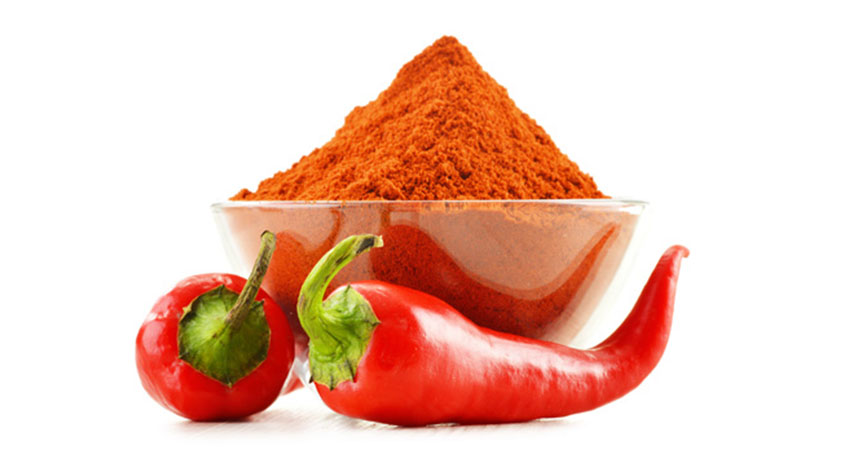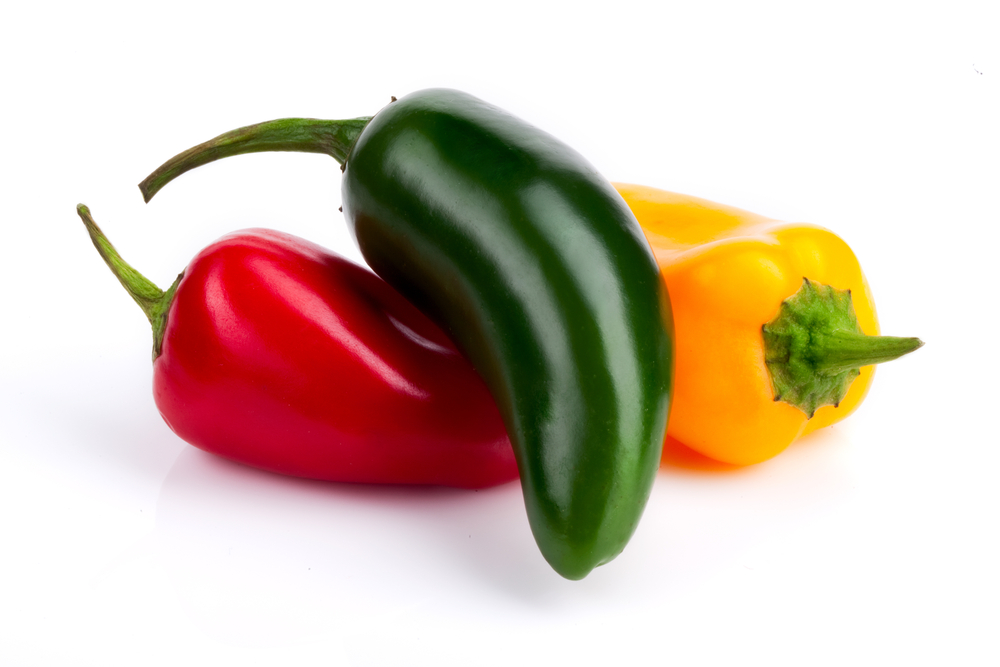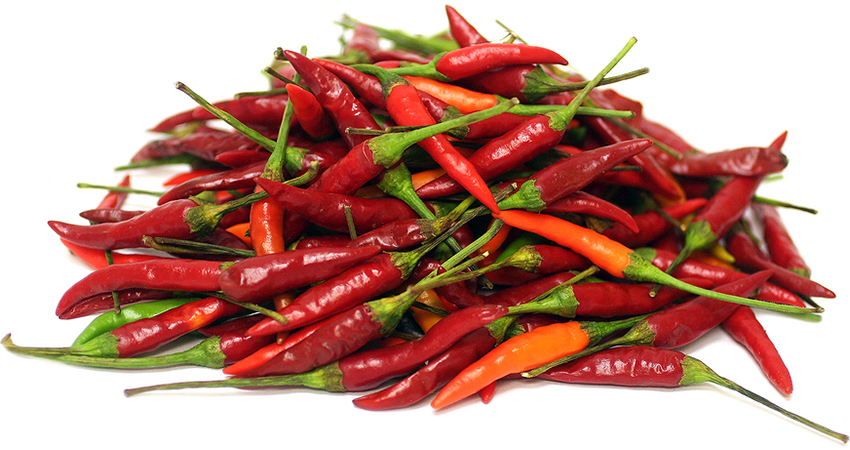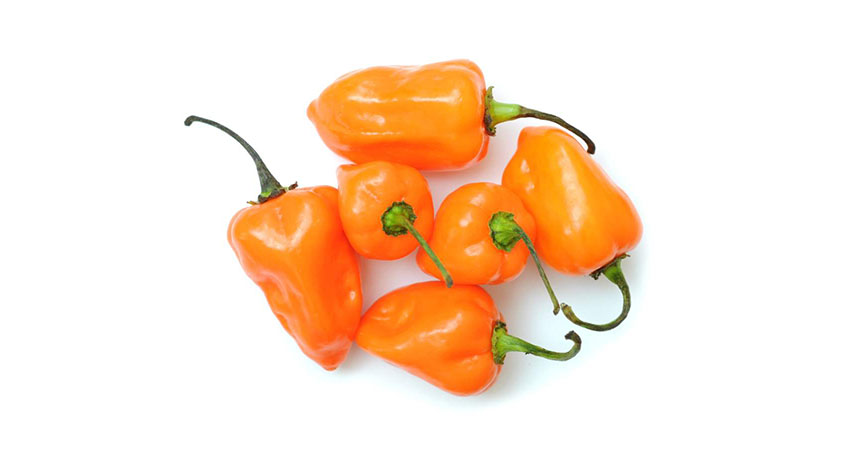Chili
CHILI / CHILE / CHILLI PEPPER
Part of the capsicum family, chillies come in scores of varieties and colours (from green through to yellow, orange and red) and are one of the most popular spices in the world.
Chillies can be used fresh, dried or powdered, and the level of heat varies from type to type, from sweet and mellow to blisteringly hot - as a general rule, the smaller the chilli, the hotter the taste. The substance that generates the heat is called capsaicin, which is found mainly in the pith and, to a lesser extent, the seeds. But it's not all about heat - each type has its own distinct flavour.
Chili Pepper Health Benefits
Chili peppers are extremely healthy for you and offer a number of health benefits. They should be included in your regular diet. Here's why.
- Chili Peppers Have Loads of Vitamin C
- Chili Peppers Help Protect Your Heart
- Chili Pepper Can Help You Burn Fat and Lose Weight
- Chili Peppers Help Soothe Intestinal Diseases
- Chili Peppers Fight Inflammation
- Chili Peppers Help Lower High Blood Pressure
- Chili Peppers Can Warm Your Feet
- Chili Peppers Fight Cancer
- Chili Peppers Prevent Sinusitis and Relieve Congestion
- Chili Peppers Fight Migraine Headaches and Sinus Headaches
EVERGREEN ORGANICS BELIZE grows the following species of chili peppers:
1. Cayenne (Capsicum annuum)
Cayenne is used in cooking spicy dishes, as a powder or in its whole form (such as in Indian, Korean, Sichuan, and other Asian cuisine), or in a thin, vinegar-based sauce. It is generally rated at 30,000 to 50,000 Scoville units. It is also used as an herbal supplement


2. Jalapeno (Capsicum annuum)
This is one of the most popular chili in central America and some parts of north America. These chilies are primarily grown in southern part New Mexico and some parts western Texas. Jalapeno is used the large number of preparations including sauces, dipping and various main course cuisines.
A mature jalapeño fruit is 5–10 cm (2–4 in) long and hangs down with a round, firm, smooth flesh. It. Commonly picked and consumed while still green, it is occasionally allowed to fully ripen and turn red, orange or yellow, and is wider and milder than the Serrano pepper. Compared to other chilies, the jalapeño heat level varies from mild to hot depending on cultivation and preparation and can have between 2,500 and 10,000 Scoville units
3. Thai peppers / Bird's eye chili (Capsicum frutescens)
Thai peppers are generally smaller and characteristically points to the sky when on the plant, but is quite hot (piquant). It measures around 100,000–225,000 Scoville units, which is at the lower half of the range for the hotter habanera chili but still many times more spicy than a jalapeño These chilis are used in soups, salads, and stir-fried dishes. They are also put in fish sauce as a condiment or eaten raw. In Thai cuisine, these chilis are highly valued for their fruity taste and extreme spiciness. They are extensively used in many Thai dishes, such as in Thai curries and in Thai salads, green as well as the ripe red chilis.


4. Piri Piri (Capsicum frutescens)
Piri piri also called African bird's eye chili
This chilli is also known as - 'African Red Devil'. As the name suggests, this chilli originated in Africa and is extremely hot. It's thin and cylindrical in shape with reddish orange tint. The name 'Piri piri' came from Portuguese language which is used to identify this African devil. This chilli is primarily grown in Mozambique and Congo.
The fruits are generally tapered to a blunt point and measure up to 8–10 cm (3–4 in) long. Immature pod color is green, mature color is bright red or purple. Some varieties of birdseye measure up to 175,000 Scoville heat units.
5. Habanero (Capsicum chinense)
This is yet another intensely spicy chilli. Habanero originated in Cuba and is grown in different parts of Cuba, Mexico, Costa Rica Belize and Panama. This chilli is consumed in large quantity in Latin American society in the form of puree or salsa. It's aromatic nature made it very popular and its use is not limited to select dishes. The habanero's heat, its fruity, citrus-like flavor, and its floral aroma have made it a popular ingredient in hot sauces and spicy foods.
Unripe habaneros are green, and they color as they mature. Common colors are orange and red, but white, brown, yellow, green, and purple are also seen. Typically, a ripe habanero chili is 2–6 cm (0.8–2.4 in) long. Habanero chilis are very hot, rated 100,000–350,000 on the Scoville scale.

